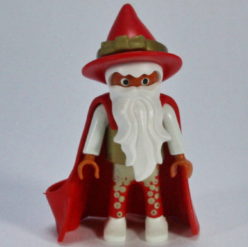Between 1978 and 1992, 67 sets appeared in Playmobil catalogues in the ‘Color’ theme (three-quarters of these appeared in the first three years, 1978-80). Nine sets released more recently in 2023 and 2024 have also been billed as ‘Color’ sets, but I am not including those 9 sets here. Note that PlaymoDB has most Color sets listed in the Color theme, but six sets are placed in other themes; 3658 (Indians), 3679 (Safari), 3700 (Western), 3702 (Traffic), 7109 and 7125 (Add-Ons/Wild Animals).
In the early days of Playmobil, there was very little printing of parts (stickers were used, then injection-moulding techniques which permitted the production of 2- or 3- colour* parts). In order to give children the chance to create more elaborate patterns on parts, Color sets were introduced.
*I have used the British-English spelling of colour throughout, apart from the title of the theme, Color.
Felt pens for colouring the parts
The klickies (apart from the hair and head) and most accessories were made in white plastic which the owner could colour in with felt pens (aka felt tips, felt-tipped pens, fibre-tipped pens).
Two sets 3621 and 3675 also had paper stickers to colour in.
Sometimes the felt pens were supplied with a set, but there were three sets (3600, 3601 and 3602) which contained only felt pens, distributed by Playmobil as suitable for colouring PM plastic.
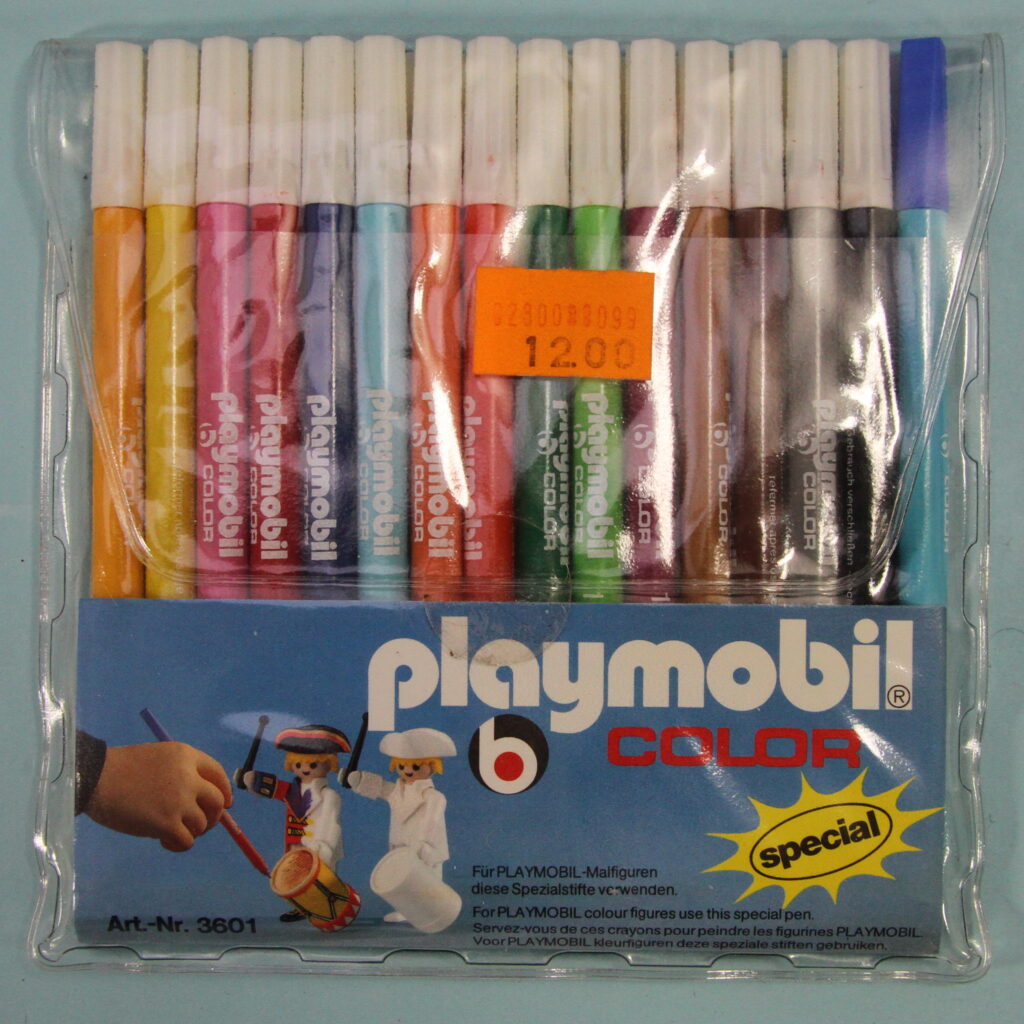
Klicky holders
A special handle was included in most Color sets, which would hold a klicky whilst it was being decorated. They were made of red, blue or white plastic.
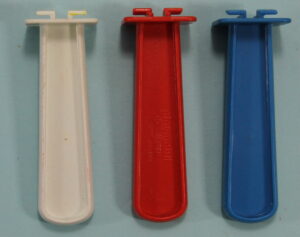
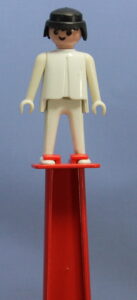
Box Art
The box art of Color sets showed coloured-in parts, beautifully finished. But several people who had these sets as children have commented how frustrating it could be to try to create results like this.
Some box art showed partially coloured sets (sets 3673 and 3658 below)
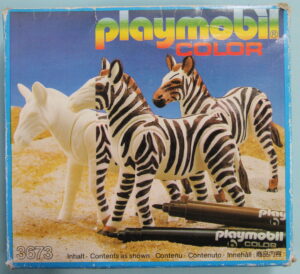
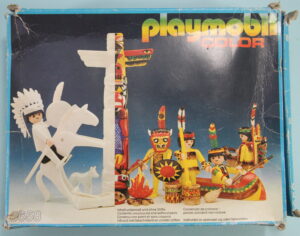
Set 3630 and 7050 had the box shown below (front and back) with very intricate colouring.

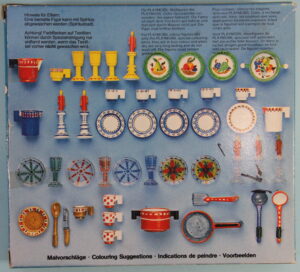
The box picture below confusingly shows a yellow pen, though only a brown one was included. The yellow pen was part of the Color branding and is found on the box art of 26 Color sets.
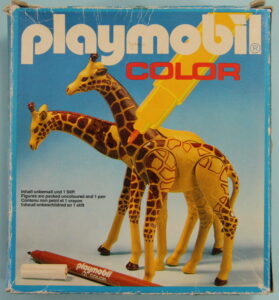
The results in real life range from impressive to messy:
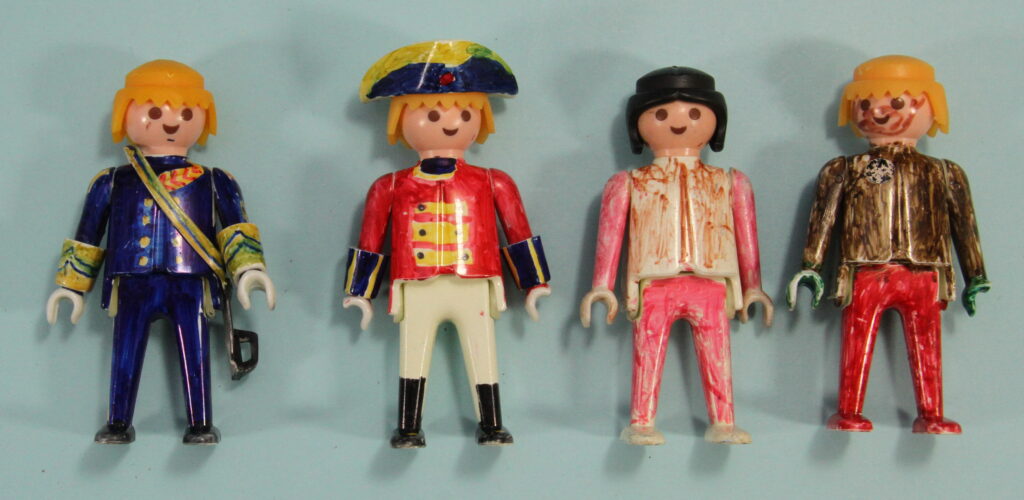
Another comment by people who had these sets as a child was how easy it was to break the klicky hands (until the early 1980s, all klickies had hands molded as part of the arm, so-called ‘fixed wrists’)! It is possible that the plastic used for Color parts was different from that of other Playmobil, perhaps so the ink would ‘take’ to the surface better. It may be that the plastic was also slightly weaker.
Color sets which were never released
Although 67 ‘Color’ sets are featured in PlaymoDB and other sources, three of those pictured in the 1980 catalogue are thought never to have been released: 3611x, 3670x and 3656x They are known only from catalogue pictures, but the sets never went into production. All of the parts in these sets can be found in other sets; the exception being the fez hats in 3611x, known only in red plastic.
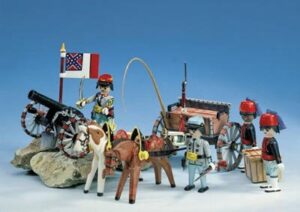
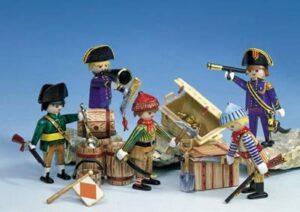

DS Color sets
Six Color sets (all with numbers 7nnn) were issued in ‘Direct Service’ catalogues. Five of these seem to be identical to sets in the ‘main’ range and one, set 7102, (below) was unique.
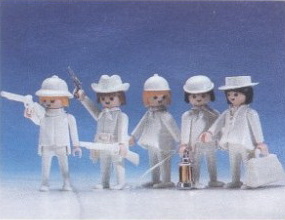
(There were also a further 17 sets, each with a single klicky and some accessories, issued as ‘give-aways’ and ‘Gimmicks.’ See below)
A couple of non-Color sets with parts which needed colouring
Two sets (3145 and 3189) which were not part of the ‘Color’ range nevertheless had some parts to colour, animals such as tigers, giraffes, zebra and gnus.
In the case of set 3145, the zebra (all white), giraffe (all yellow), tiger (all orange) and gnu (all grey) were supplied ready for extra markings to be applied with felt-tipped pens. Black and brown pens were included (as shown on the picture on the front of the box, at least in later versions of the set)
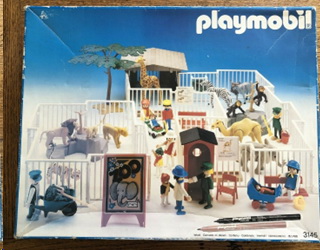

The two pens could be used to add the markings to these animals (black for the stripes on the tiger and zebra, brown for the patches on the giraffe, stripes and head-markings on the gnu).
Set 3189 had giraffes and zebras to colour, but it is not certain whether felt pens were included.
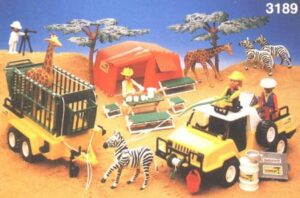
Gnus (Wildebeest) in the Color set 3677 are shown on the box as having been enhanced with felt pens, but Gnus found in sets 3046, 3528 and 7011 were not enhanced in this way.
The parts
Most of the parts in Color sets were made of white plastic, though a few parts came in ‘normal’ colours. Some parts may exist in two colours in the same numbered set; for example in 3660x some parts shown on the box are white, but in most examples online where set contents are displayed, they are chrome.
What is in each set
Being authoritative about the contents of the early Color sets is difficult because auhentic pictures of the original contents are quite uncommon online. Collectors with MISB sets are reluctant to open them to discover and display the contents, possibly more so with these old and often rare sets.
Of the 61 Color sets (ignoring the 3 sets which weren’t issued and the 3 sets of just pens), I found pictures online of just 14 sets where the contents were clearly laid out and a further 18 sets where the contents were partially visible in sealed original clear plastic bags, leaving 29 sets where the contents have to be established by studying the set box pictures or promotional photos, unless one is lucky enough to own the sets themselves in unopened boxes (not me, I have no MISB Color sets apart from the pen set 3601 shown above).
Color sets for sale online may show the set contents, but caution is needed to be sure what is shown really does reflect the original set contents. Ideally, parts will be attached to original sprues and still sealed inside the plastic bags of the original package, as in the picture below (set 3690).
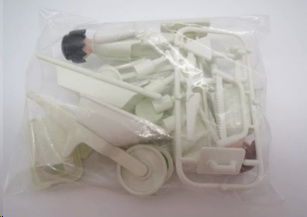
The presence of sprues is useful, allowing the assumption that all parts found on the sprue will be present in the set, even if they are not all visible on the box picture. An example of this is in set 3660x where a frying pan shown on the box picture makes it safe to assume a further 10 cooking implements and utensils* were also present.
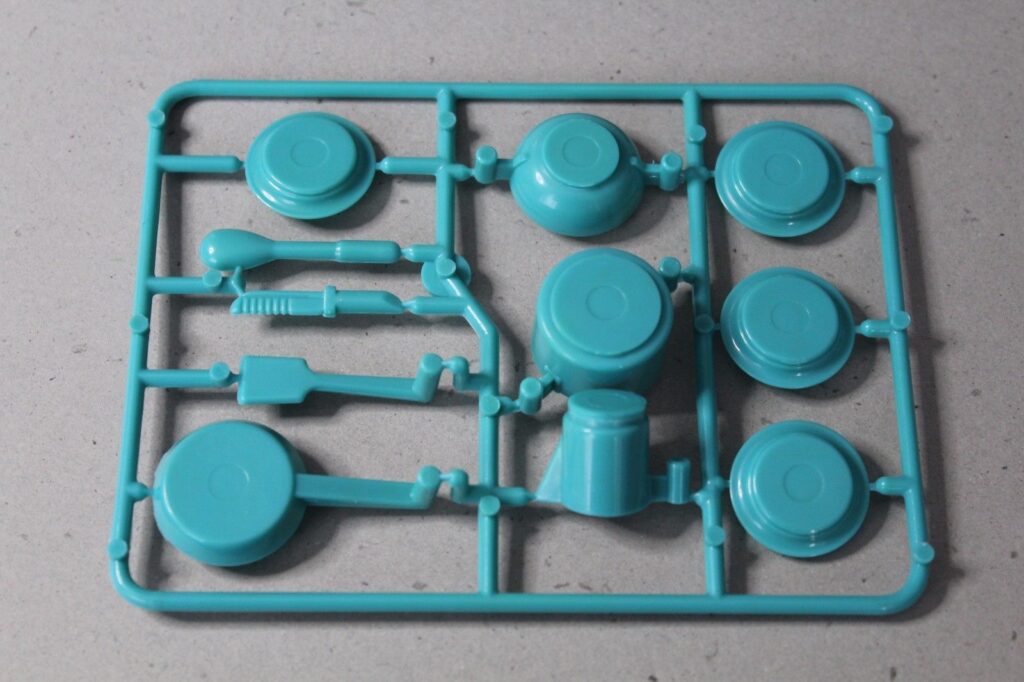
However….
Cleaning color parts
Removing felt pen ink is possible. I have used:
- Methylated spirits (or other ethanol-based solvent such as rubbing alcohol, surgical spirit, even 150 degree proof vodka would probably work!) and rubbing hard.
- Hydrogen peroxide (combined with the UV in sunlight can be quite effective, using a UVB-emitting light bulb such as those marketed for pet reptiles can help when the sun isn’t shining, but BEWARE, I had two pieces partly disintegrate when bleaching them in strong peroxide under a UV lamp). Hydrogen peroxide breaks down into oxygen and water, so it leaves no residue or odour.
 This method is useful for removing ink which cannot be rubbed off, ink in tight corners and ink which has absorbed into the plastic.
This method is useful for removing ink which cannot be rubbed off, ink in tight corners and ink which has absorbed into the plastic.
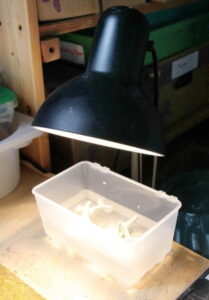
- Hypochlorite bleach (not recommended as it may damage the plastic slightly and leaves an odour; always wash off thoroughly if you do use it).
- Cream cleanser or car ‘T-cut’ (to scour off the surface of the plastic)
- Washing parts in the dishwasher (I suspect the heat may bake the colours into the plastic, so I don’t really recommend this method).
Some methods work better on some parts and some ink colours. Non-Playmobil felt-tipped pen ink probably responds differently from the ‘official’ pens, which seem to have been of good quality. The dishwasher method, for example, didn’t touch black ink but worked quite well on other colours. You have to take care not to snap parts when you are rubbing away with alcohol, cream cleanser or whatever.
Another way to get white parts is to spray existing parts (of any colour) with white paint. I use a white primer sold for plastic parts of cars. Removing this white paint afterwards may prove even more difficult than removing felt pen ink, however.
Link: Inventory of all Color parts
The link above is to an Excel spreadsheet containing an inventory for all 61 Color sets. I also included the three sets which weren’t released and the Giveaway/ YPS sets (see below) but ignored the pens-only sets. Mostly I used set box and promotional pictures to establish what was present in each set.
The following statistics relate only to the 61 issued sets.
354 parts are found in Color sets, including
- 20 different klickies,
- 13 animals with 2 to 7 sub-parts,
- 11 other objects made of more than one sub-part (e.g. a chest with lid, body and base) and
- 43 sprues with from 2 to 8 different sub-parts (e.g. tools).
Altogether there are 514 different sub-parts (including 28 klicky sub-parts).
-
Color Sets: 61
-
Klickies in Color sets: 20 (28 sub-parts)
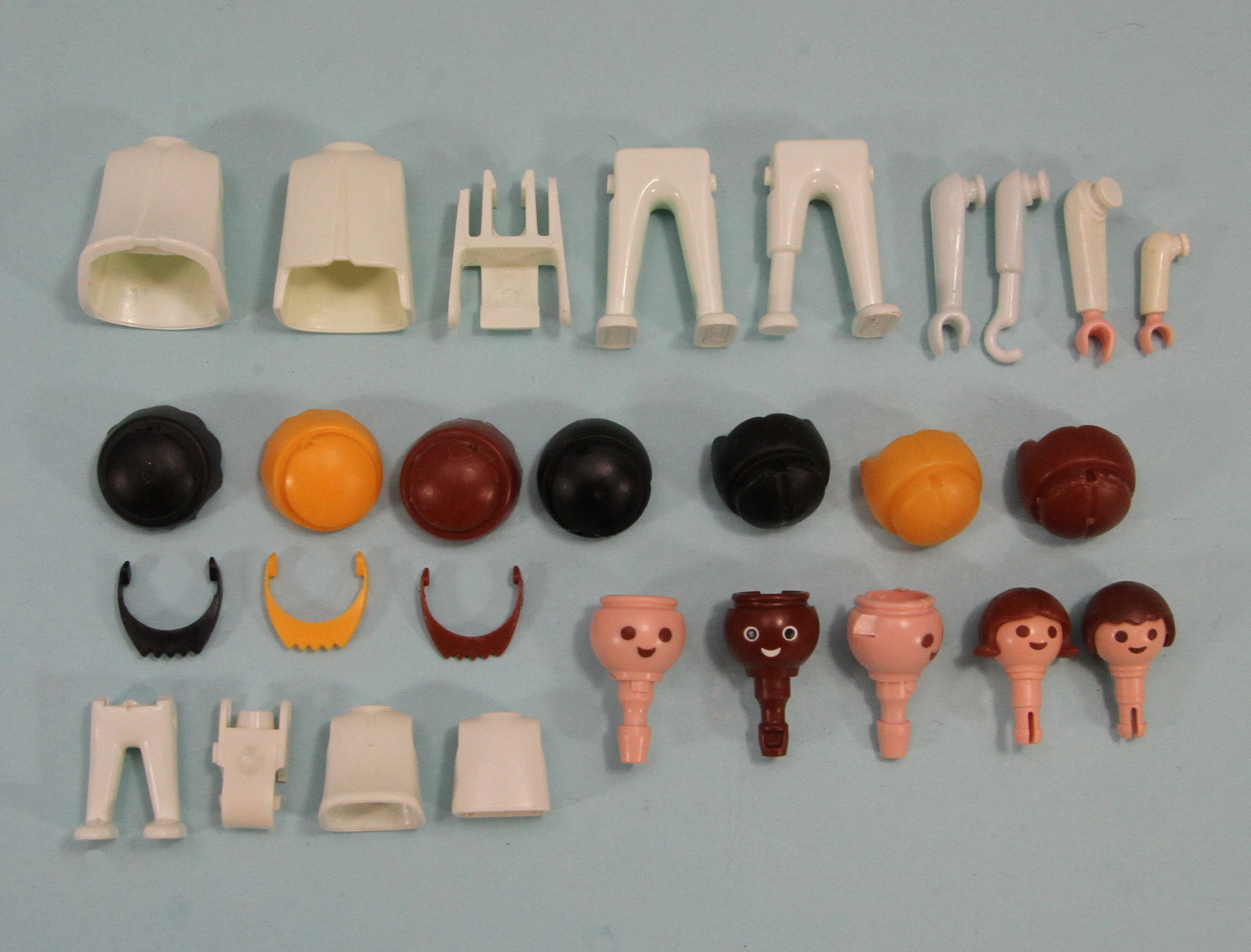
28 klicky sub-parts combined in different ways made 20 different klickies. (Slightly different versions of these parts, especially skeletons and heads, also existed) -
Parts in Color sets: 354
-
Distinct sub-parts in Color sets: 514
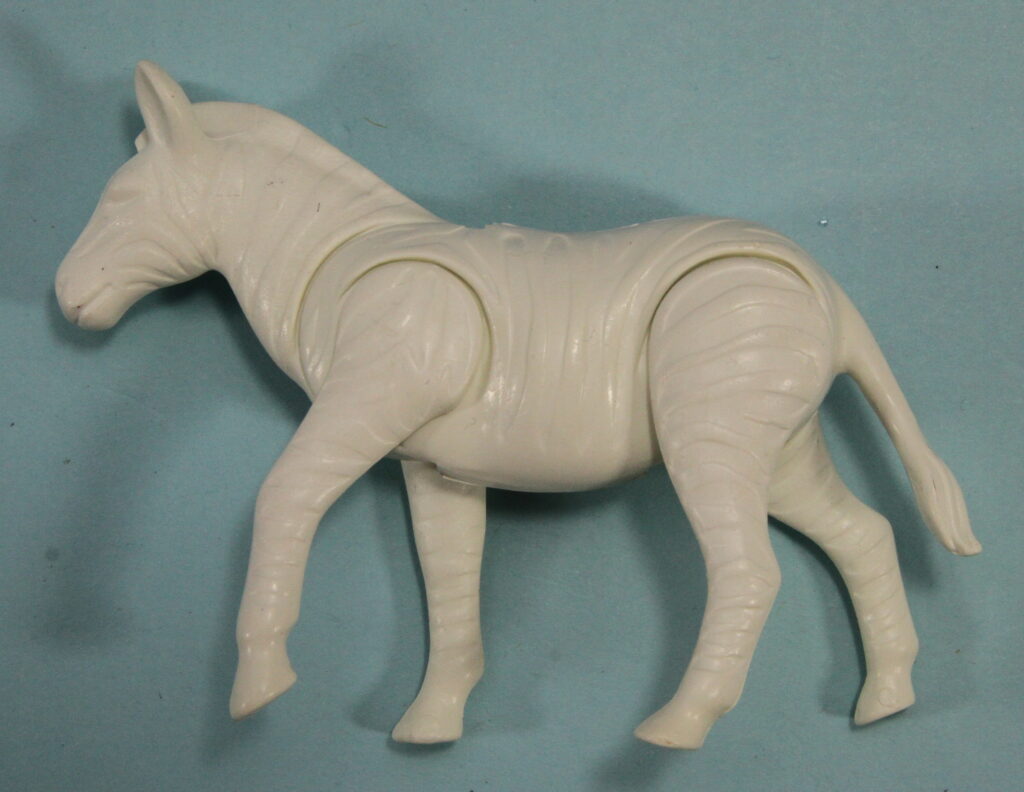
A zebra has 6 sub-parts- 4 legs, a head and a body
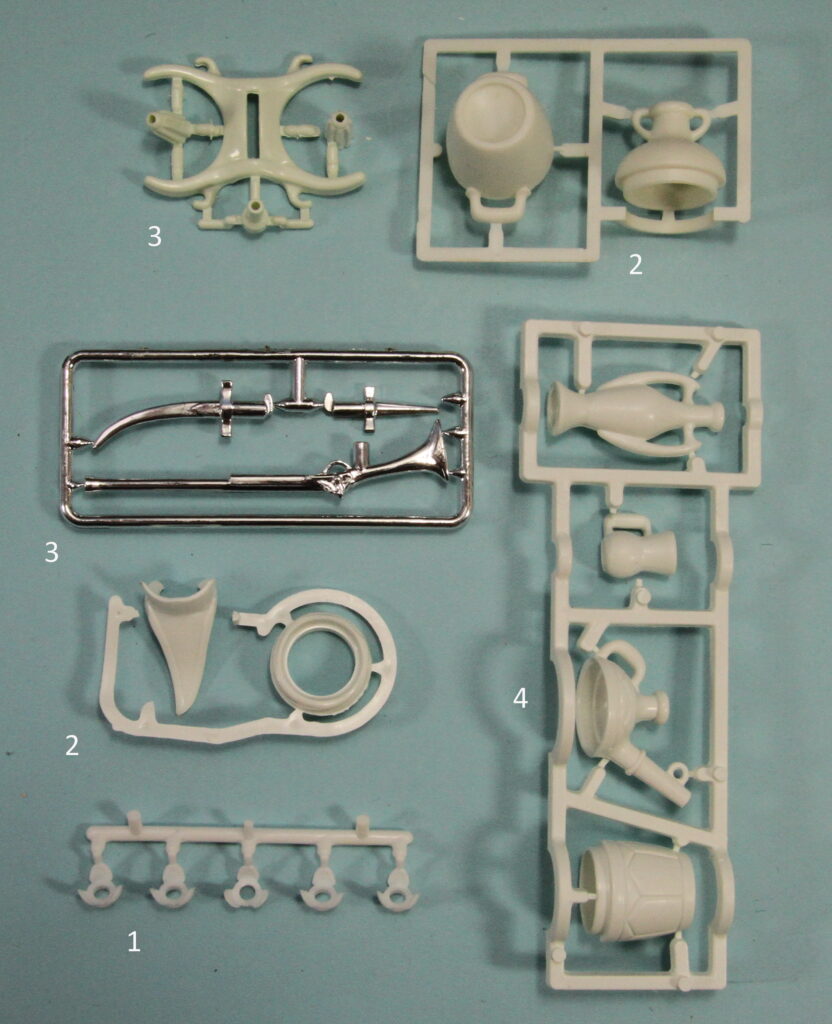
Of the 354 parts, 237 parts (67%) were white, but other coloured parts were found in Color sets: black (26), chrome (23), grey or light grey (10), yellow (6) and several other colours.
All parts in Color sets (not all to same scale)
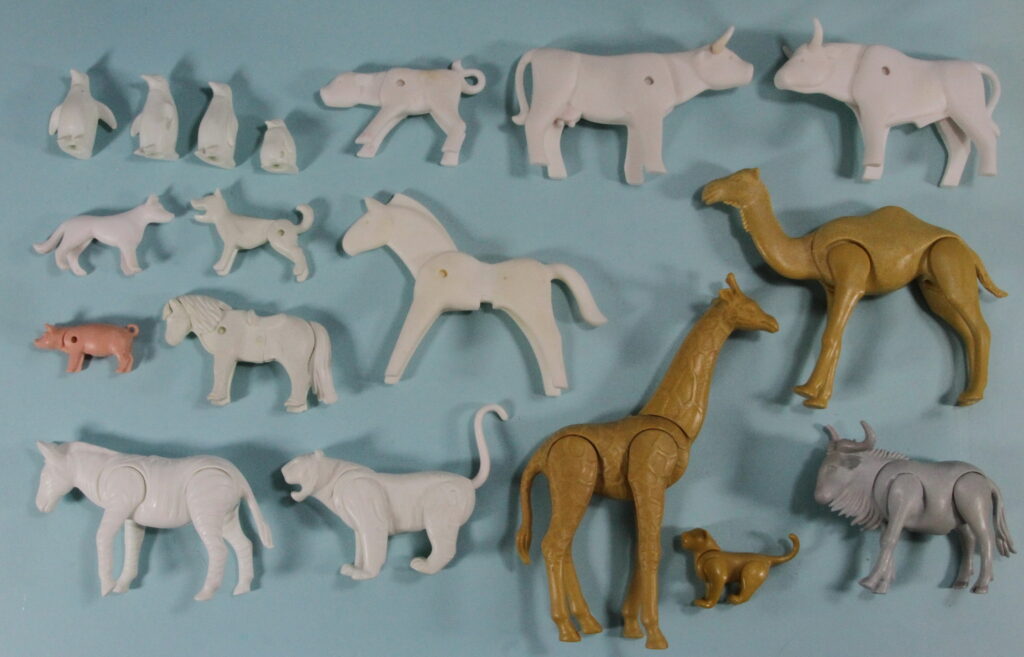
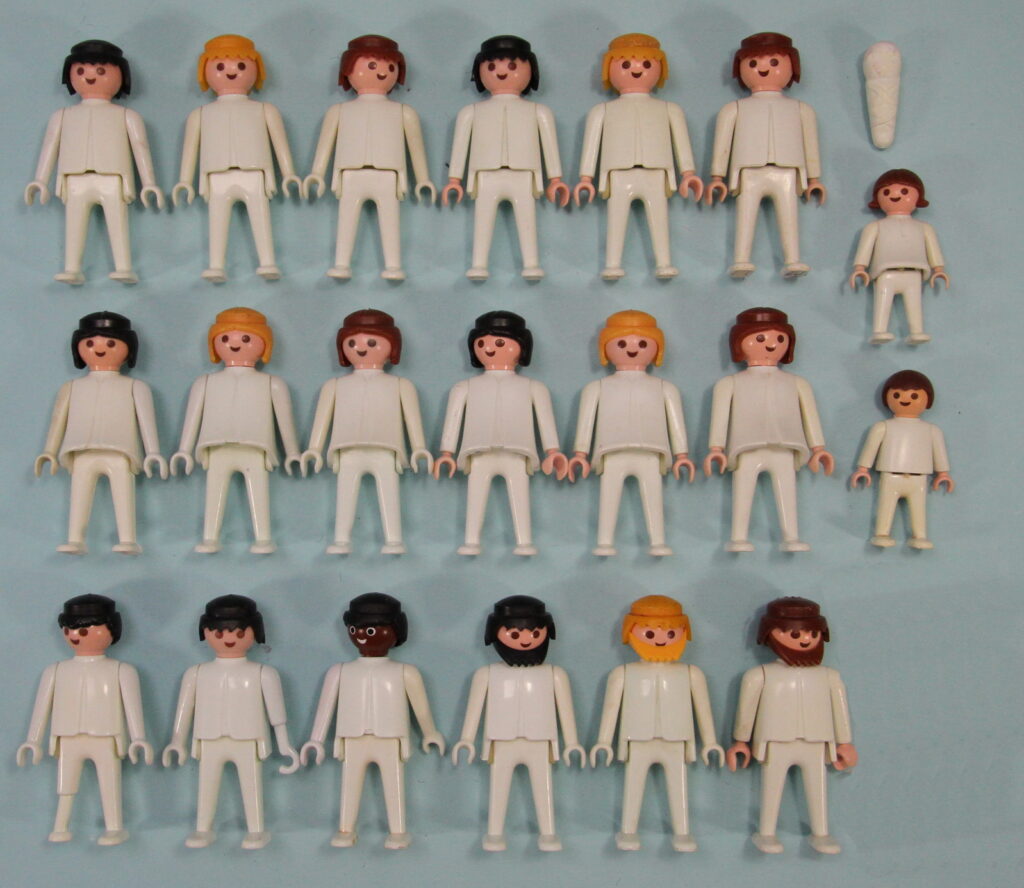
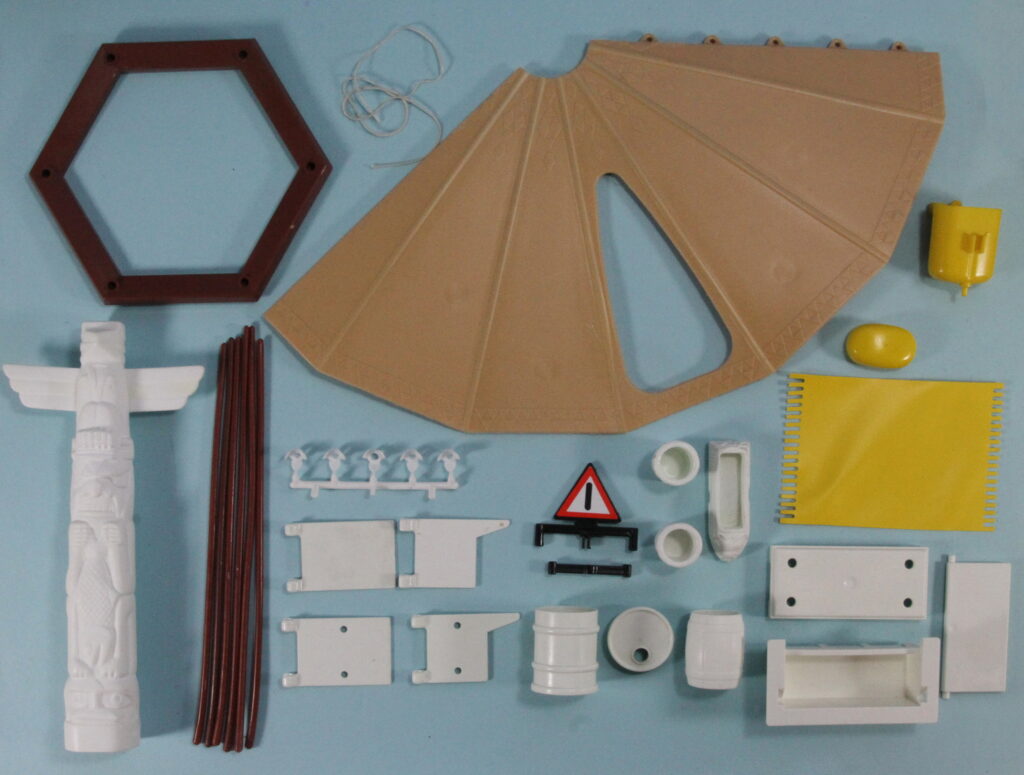
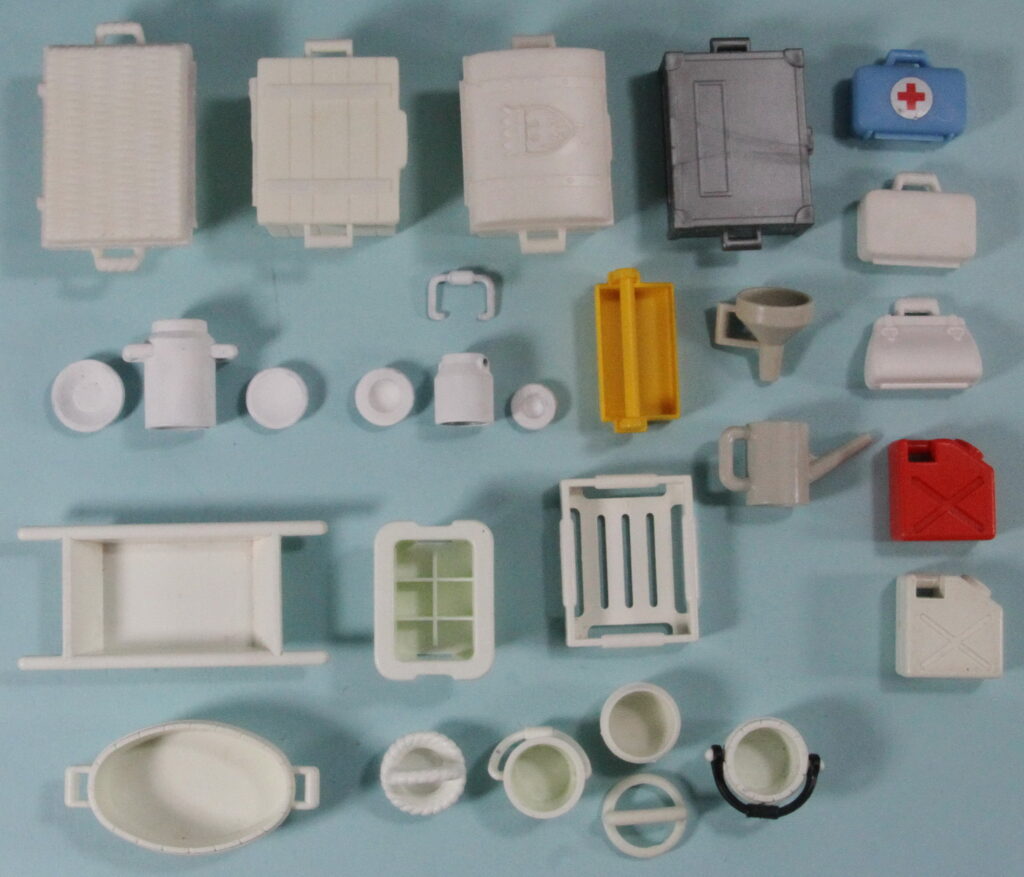
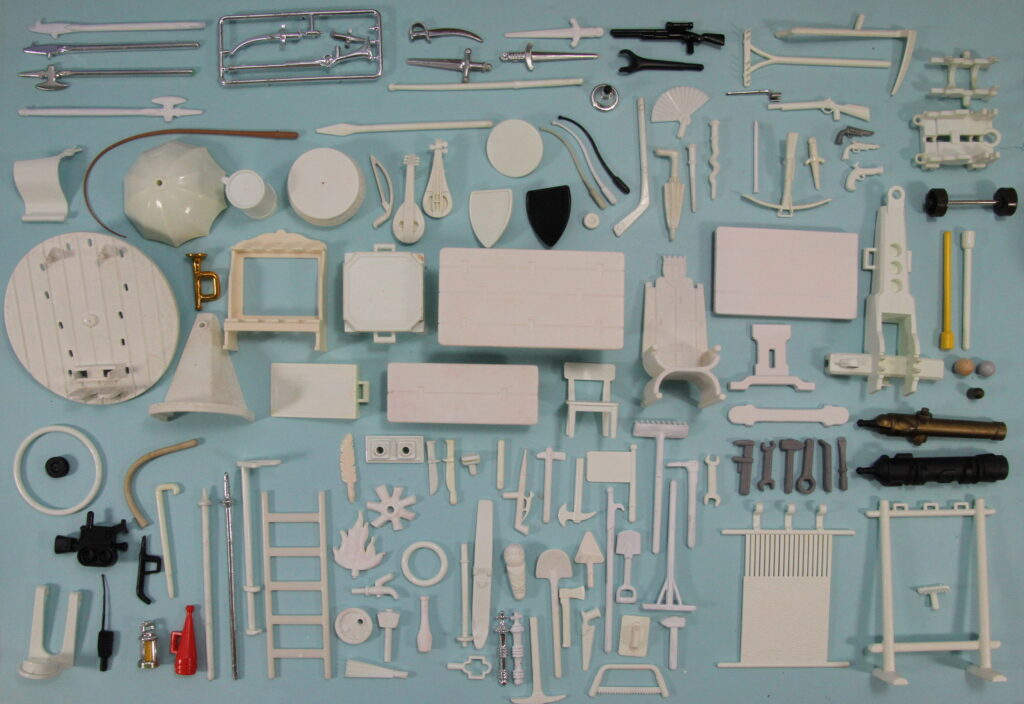
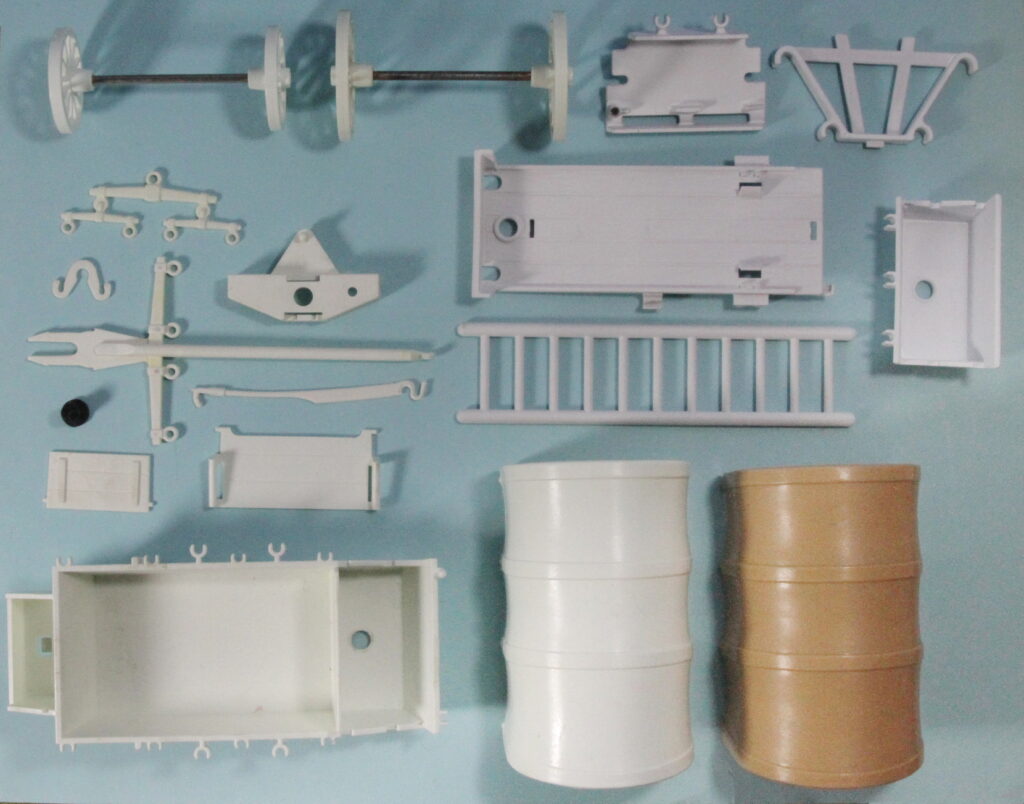
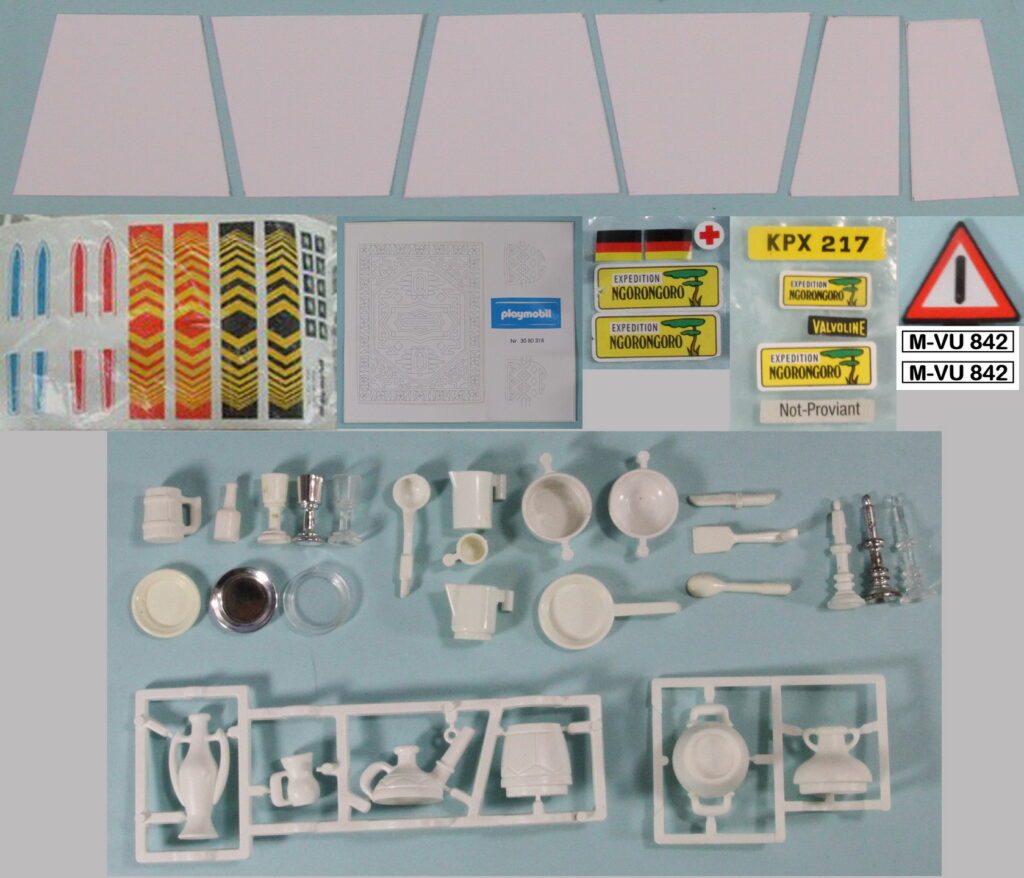


Part numbers
If we knew all the part numbers, there would be 354 of them. However, 8-digit part numbers are known for only 87 Color parts, representing 137 sub-parts. All but one of these appear in other, non-Color sets. In fact virtually all Color parts appear to have been made in moulds used for other sets, albeit with different coloured plastic.
However, 9 parts, all white, are unique to Color sets, all but one of them in the Indian theme. The pictures below show fronts and backs of these unique parts.

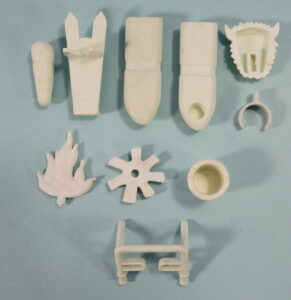
Left to right: top row;
- Papoose (Indian baby)- sets 3619x, 3641, 3658, 3705
- Papoose back board – sets 3619x, 3621, 3658, 3705
- Cradle (2 shown on right, one type has hole in the back) – sets 3621, 3658, 3705
- Mask for Indian dancers, Facemask with clip to hold Indian mask – sets 3620, 3658, 3705
Middle row
- Campfire, sticks in circle with centre hole, flames [on sprue] – set 3619x, 3621, 3636, 3658, 3758
- Indian bucket (issued on a sprue with 2 buckets and the cradle)- sets 3621, 3658, 3705
Bottom row
- Motorcycle add-on frame for stunt performer -set 3641
The papoose fits well into the carrier, but not into the cradle. Perhaps it isn’t a cradle?
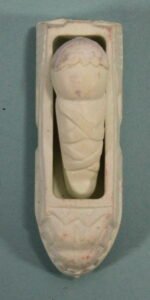
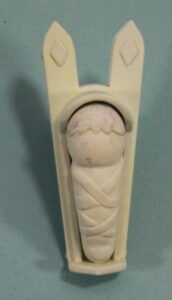
Creating pictures of set contents
I set about acquiring at least one example of every part found in a Color set. I then used these to create set contents pictures for each set. I used Photoshop® to ‘create’ additional parts where required. Some 37 parts (all white ones) I could not buy at a reasonable price so I found identical parts in another colour and sprayed them white. Most (27) of the parts I made this way are found in only one set each, half of them (13) in set 3707, which is very rare (the asking price for one on eBay at the time of writing is a mere 1700 Euro!).
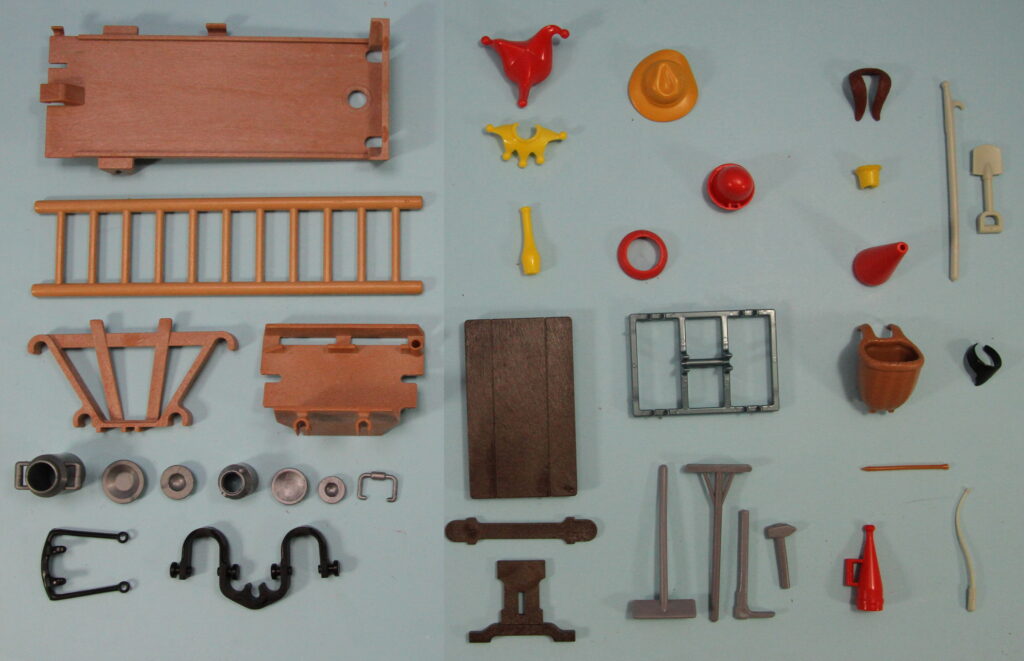

For 5 parts which I only had one example of each, I used water-soluble white poster paint, brushed on; although this method covers less well than spraying, at least poster paint can be removed with water.
Variation within a set
Sometimes, earlier examples of a set contain white versions of a particular part and later examples of the same set contain parts in their more ‘usual’ colour; for example in set 3624 both the small shield and the saddle can be white or black. Perhaps savings were made by including more ‘standard’ parts, rather than creating another batch in white plastic.
Here is a list of parts thought to have come in different colours in different examples of the same set:
| Part name | Colour shown on box picture | Alternatives known from pictures online | Sets |
| Shield, small | White | Black |
3624 |
| Horse saddle | White | Black | |
| Breastplate, regular size, moulded design | Chrome | White1 | |
| Stand for motorcycle, 1 clip, old-style | Black | White | 3641 |
| Whip [long] | Light brown | Light grey | 3646 |
| Balloon string | Light grey | White | |
| Cannon balls, small, smooth (set of 12) | Light brown | Light grey | 3657 |
| Flagpole, ring and point on top | White | Chrome |
3660x |
| Halberd | White | Chrome | |
| Spear, barbed head | White | Chrome | |
| Wagon canvas cover | White | Light brown | |
| Candlestick (possibly not in the set at all 2) | White | Chrome | |
| Fire Extinguisher [old-style cone] | White | (Red)3 | 3680 |
| Stand for motorcycle, 1 clip, old-style | White | Black | 3702 |
1I found a white breastplate in my spares and speculate that this came from a Color set. 3624 is the only set possible, unless it is from Famobil or other Licensee.
2Candlesticks are often shown as part of this set, but they are not visible on the box art
3Probably only red ones were ever supplied as the white version seems unknown to collectors
There are a few parts which I have only ever seen as white versions on box pictures, not in ‘real life’ or in pictures online. I suspect some of these 6 parts may never have existed. These are ones I created by painting;
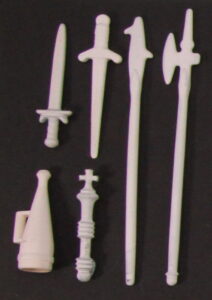
sword, guard curves away from blade*; sword, guard curves away from handle; spear, barbed head; halberd; old-style fire extinguisher; sceptre*.
*these parts are found in the knight and king giveaway, respectively (see below)
Giveaways and Gimmicks
Watching what is offered on eBay has revealed the existence of 17 small sets which fit in the color theme. 15 of these were probably promotional items (‘give-aways’) but now command high prices (50 to 70 Euro each). All 15 sets have a single figure with a few accessories. All have free wrists, suggesting they were issued well after 1980.
- 5 sets were issued in the UK (judging by the address on the card enclosed with each set): a pirate, a knight, a king, a cowboy and a clown, all with mainly white accessories,
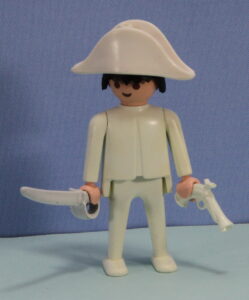
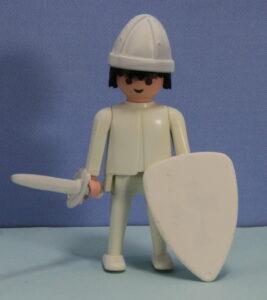

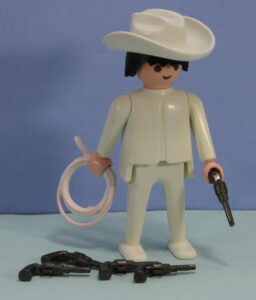
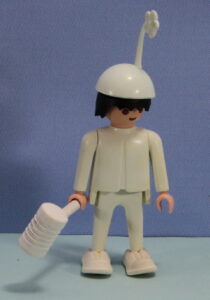
- 4 sets were issued as a single klicky with a mixture of white and non-white parts and accessories; a viking, two different pirates and a lady with a hoop skirt,
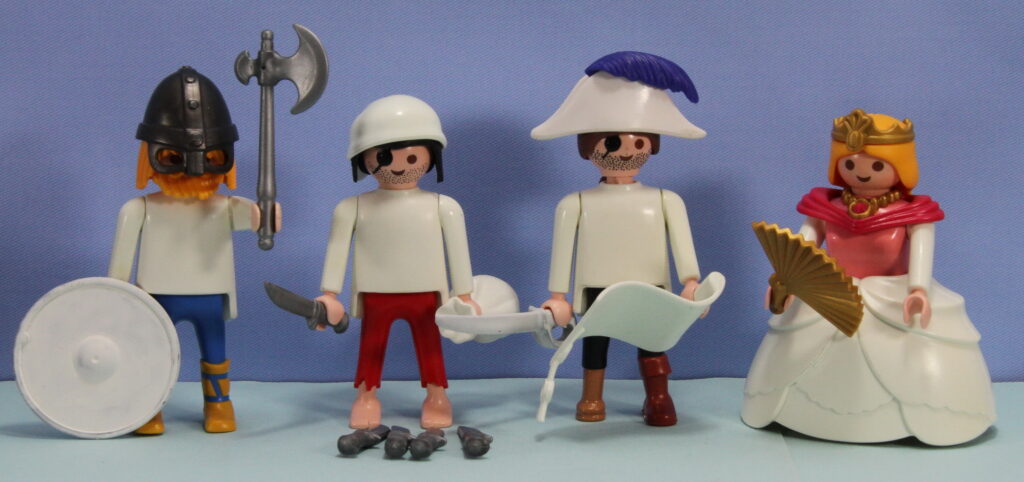
- 6 sets were issued as a single klicky with mainly white parts and a few non-white parts; a farmer, a camerawoman, a knight, a guard, a pirate captain and an Indian.
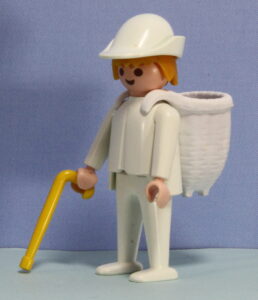
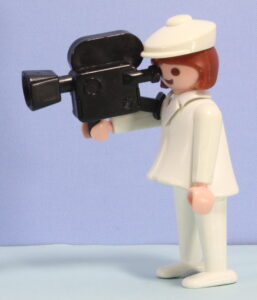
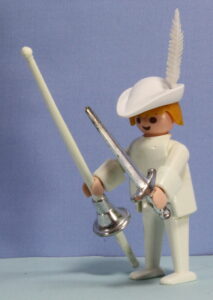
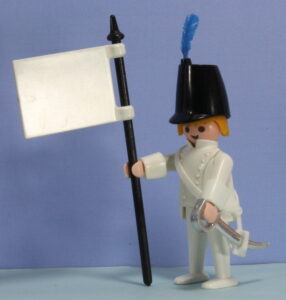
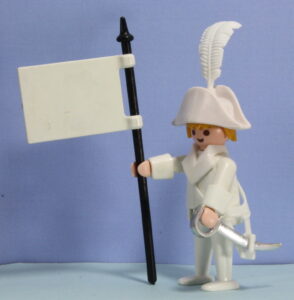
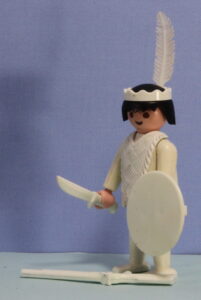
![]()
Two further sets were free gifts (‘Gimmicks’) with the German YPS magazine (a soldier with fixed wrists and a cannon- the cannon was supplied with the wheels separated from the metal axle).
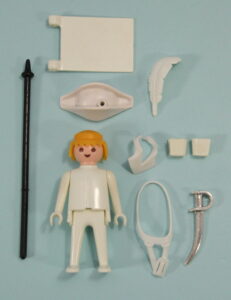
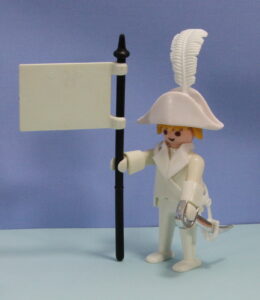
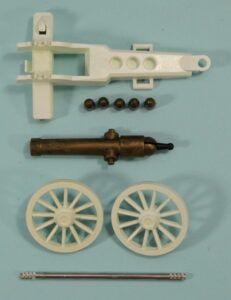
16 white and 11 non-white parts in these giveaway sets shown below a![]() re not found in the ‘main’ color sets. The parts on the bottom row of the picture below were all created by painting parts white.
re not found in the ‘main’ color sets. The parts on the bottom row of the picture below were all created by painting parts white.
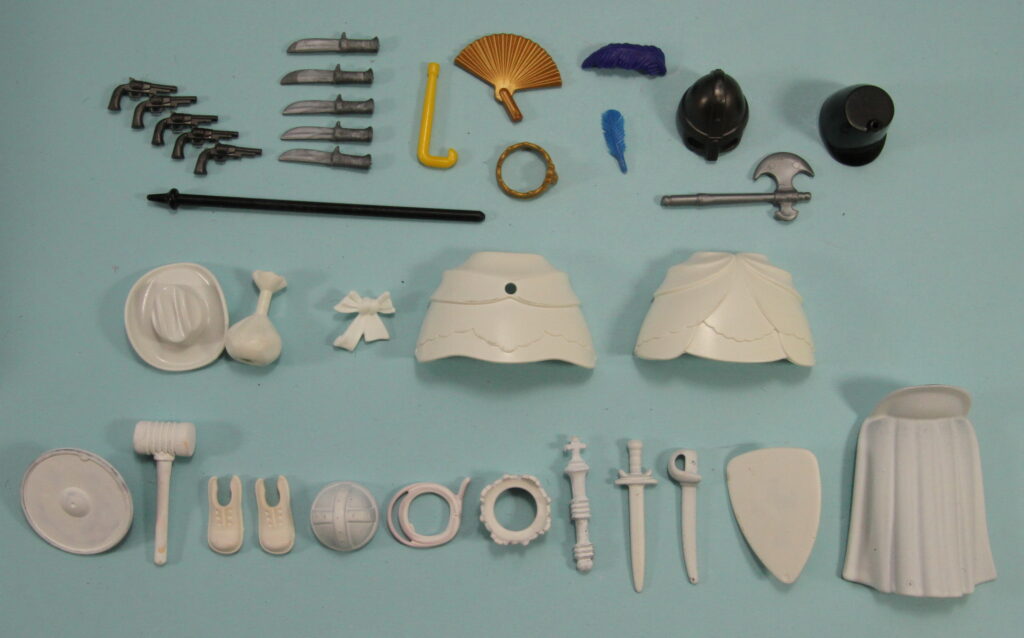
White parts not from Color sets
Note that collections of Color parts for sale online may often contain white parts ne![]() ver found in any Color set. Here are some examples I have seen. The cap and horn on the top row are most frequently included.
ver found in any Color set. Here are some examples I have seen. The cap and horn on the top row are most frequently included.![]()
![]()
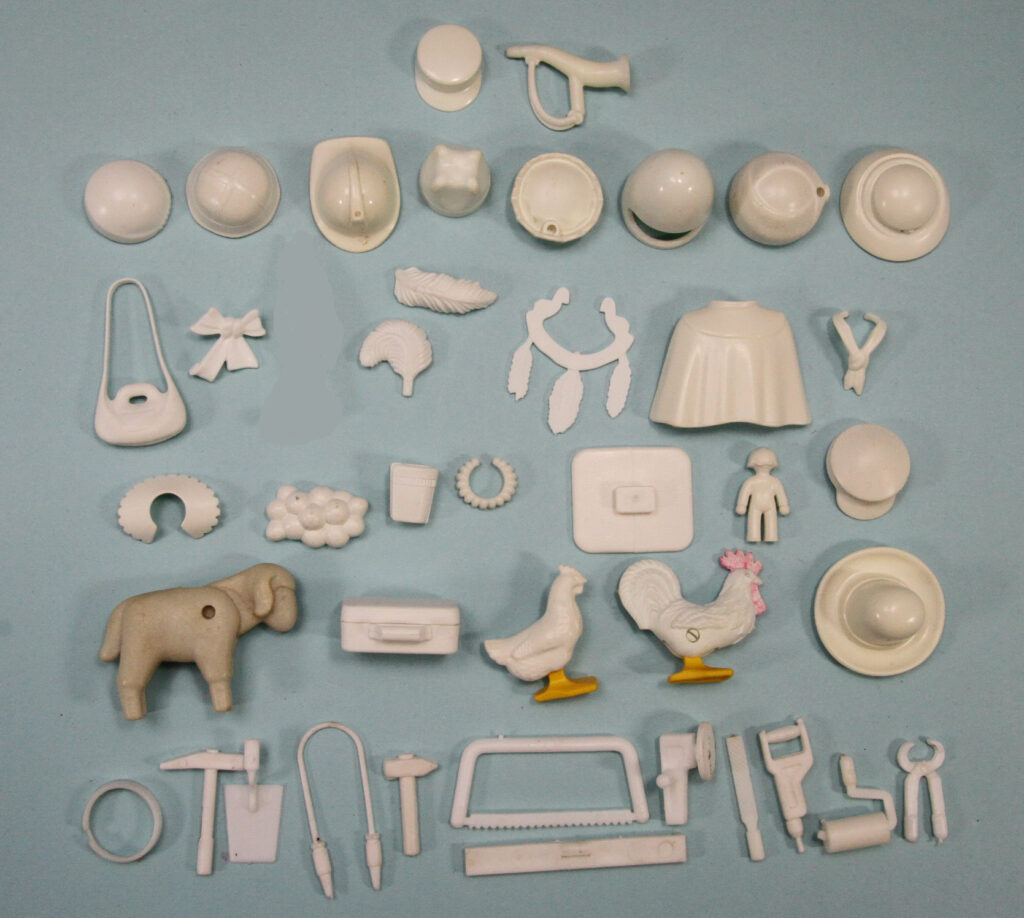
The white parts on the bottom row are from the PlayBIG toy range, with nothing similar in Playmobil, apart from the hammer, which is smaller than the Playmobil equivalent
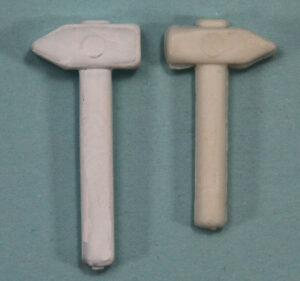
Page created 31 May 2025
